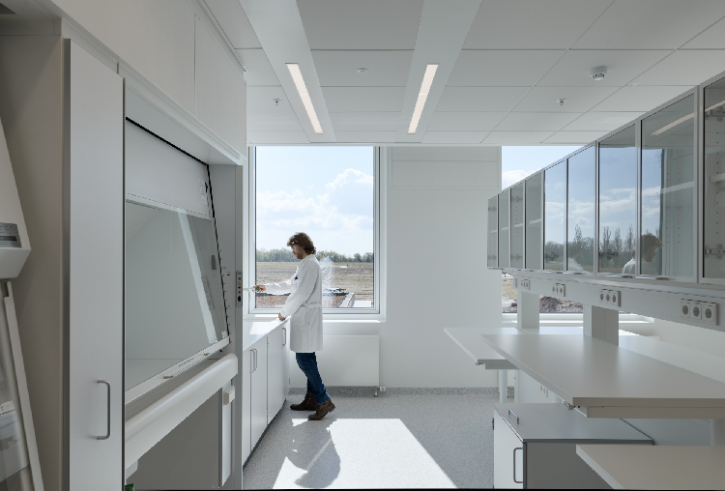Little time has passed since Novonesis officially came into being. The result of a merger between Denmark’s Chr Hansen and Novozymes, Novonesis aims to ‘unlock the limitless potential of biosolutions’ in what is now a €3.7bn business.
While all this sounds impressive, former clients of Novozymes and Chr Hansen will be keen to know how the merger impacts these companies’ respective portfolios. What’s the food and beverage strategy for Novonesis going forward?
First things first: who’s heading up the new F&B division?
Prior to the merger, food and beverage ingredients fell under Novozymes’ Food & Beverage and Chr Hansen’s Food Cultures & Enzymes businesses. The latter was headed up by Jacob Vishof Paulsen.
Now Paulsen is taking on the top food and drink job at Novonesis, where he heads up the newly joint division of Food & Beverages. The portfolio spans ingredients that extend shelf-life in categories such as dairy and bakery; are designed to improve infant nutrition; and that aim to boost taste, texture, and nutrition in plant-based foods.
On the executive team, Paulsen is in the minority. Two-thirds are made up of ex-Novozymes employees, compared to Chr Hansen’s one-third. Former Chr Hansen CEO Mauricio Graber, for example, has stepped down, while his Novozymes counterpart Ester Baiget steps up.
This begs the question: why was Paulsen selected for the top job in F&B?
The answer is likely that the majority of sales in the portfolio can be attributed to Chr Hansen’s ingredients, rather than Novozymes’, and Paulsen has significant experience working with those solutions.
When posed the question, the new EVP of Food and Beverage put it down to his ’20 years of experience in the food and beverage industry’ and previous role leading the ‘biggest division in Chr Hansen’. Prior to that role, he fronted Chr Hansen’s former flavours division and served as EVP of Natural Colours – both before they were divested.
“I have broad experience in the food and beverage industry.”
Risks of an ingredients merger
One of the biggest challenges facing a newly merged business with existing clients is ensuring business continuity.
This was front of mind for Paulsen when taking the helm of Novonesis’ Food & Beverages.
“I knew an important point for me, as we merged, was to guarantee the customers we had from the two legacy companies. They should not see any disruption to the commitments we’ve already given them.”
The good news for Novonesis is that both companies knew well in advance a merger was on the horizon. “We had a good head start,” revealed Paulsen. “It’s
something I paid a tremendous amount of attention to and we’ve successfully come through the first period, securing great relations [with pre-existing clients].”
Supply disruption is not only a risk for recently merged businesses, but in today’s geopolitical climate, for food companies across the board. Being a bigger player now is an advantage on this front, suggested the F&B lead.
From dairy to bread, beverages and meat, Novonesis taps into core products ‘quite broadly’. “We’re well positioned if one of them goes up or down. It’s small nuances, because we believe all these categories will grow.”
Paulsen continued: “I don’t see big disruptions at our doorstep. It’s more for us to be able to disrupt and accelerate.”
And the opportunities? ‘Bigger is better’
On the opportunity side of things, an obvious one lies in portfolio synergies. Chr Hansen’s and Novozymes’ portfolios are complementary, we’re told. The former brings probiotics and bacteria, the latter, enzymes.
According to Paulsen, revenue synergies exist within multiple categories. Take cheese as an example. Cheese has long been at the core of Chr Hansen’s cultures business, and now with the merger offers up Novozymes’ ‘number one research platform’ for enzymes.
“Imagine what it means to tap into the biggest strain library of enzymes,” the F&B chief told FoodNavigator. “The cheese industry is continuously looking to get more out of milk, optimising the raw material base and securing the functionality of cheese – taste, texture, sliceability, or other. These composite solutions of enzymes and cultures is something we see great perspective in.”
In bringing together two ingredient suppliers with complementary technologies, Novonesis considers itself ‘the leading ingredients player in the food and beverage space’. As a merged business, Paulsen calculates the Food & Beverages division is reaching two billion consumers per day. “There’s an enormous opportunity in terms of the scale and critical mass we’re achieving together.”
Novonesis’ food and beverage strategy going forward
So as a leading ingredients supplier, which up-and-coming trends does Novonesis feel well placed to respond to?
Gut health is a prominent trend Paulsen has observed in recent times. As awareness around the microbiome builds, so too does demand for probiotics. And not just in dairy, but in dairy-free alternatives such as ‘vegurt’ products (plant-based yoghurt made from nuts, cereals, legumes or seeds), we were told.
“We see a lot of opportunities for probiotics in dairy yoghurt too, but also have customers asking us how to expand their use into more food categories. So that’s something we’re investing in.”
Other consumer demands, aside from taste and texture, include a desire for a climate friendly footprint, nutrition, affordability, and a move away from ultra-processed foods.

Looking to the future, Novonesis wants to stay true to Chr Hansen and Novozymes’ legacy strategies, which Paulsen described as ‘excelling in its core’. These categories include dairy, bakery, and beverage with ingredients designed to prolong shelf life, improve taste, and increase food safety and productivity.
“We cannot give up our big commitments on driving growth and innovation in those spaces for mass consumption.”
As to whether Novonesis plans to expand food and beverage capabilities through acquisitions, it’s unlikely. “For the food and beverage space, we don’t need it. We’re focusing on organically investing in applications, frontline people, and competences.”
